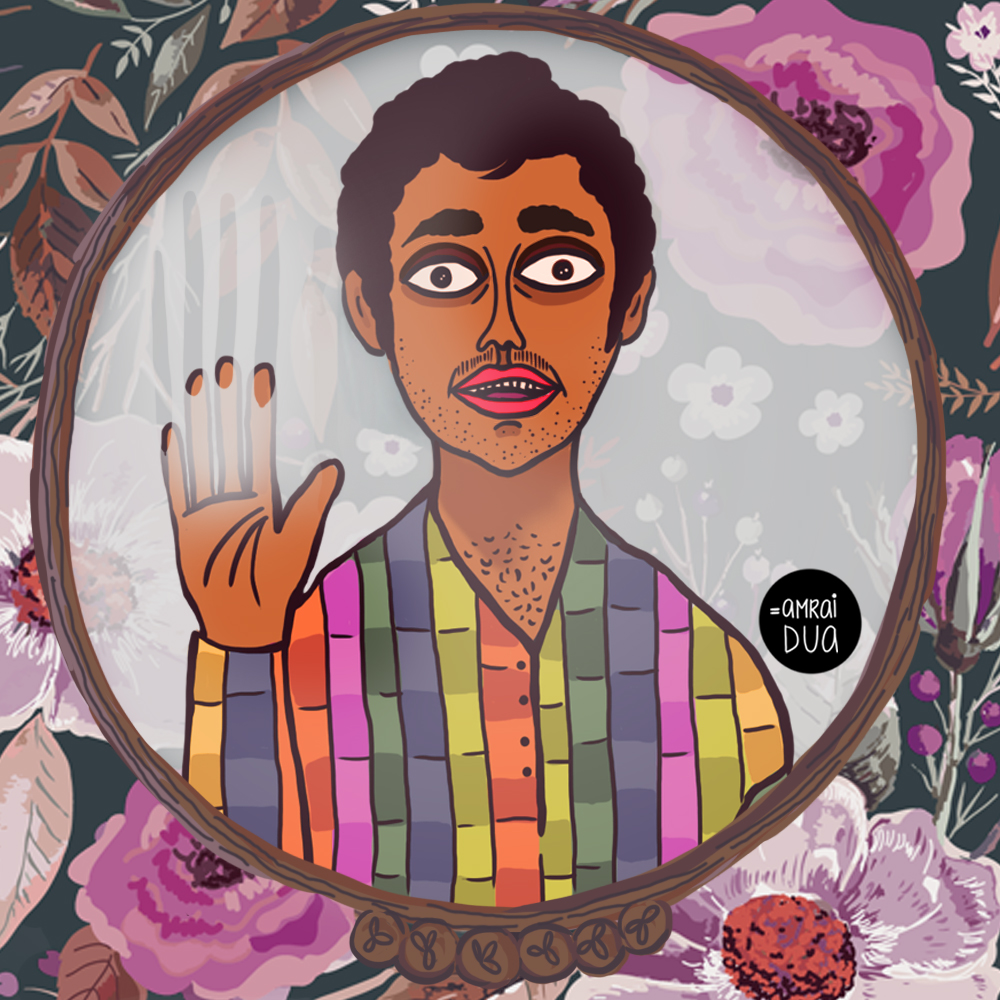I remember it being a riot of colours — a perfect patchwork of swatches of orange, green, purple, blue and pink. The first time I saw it, it had popped up as a Google ad for the brand Nicobar – squeezing into my inbox between luxury resort rentals and anxiety spam. A basic long leg kurta, with a body skimming fit and slits along the sides. It had been love at first sight. The only problem? It was in the women’s section. Months of trepidation and multiple bouts of anxiety later, I finally walked in to Nicobar’s flagship store with a friend in tow. There she was, stowed on a hanger, in all her multicoloured glory. The kurta couldn’t have popped up in my life on a better occasion. Two months ago, the Supreme Court read down Section 377, decriminalising same-sex relationships, and in turn decriminalising homosexuality. We had found our pot of gold at the end of the proverbial rainbow. Love had won fair and square, labels notwithstanding. I nervously walked up to the kurta in question, with a trail of questions in my head. What would people say? Would the staff laugh? Would my friend laugh? Would I laugh (at myself later)? The idea of men wearing women’s clothing may be difficult for some (read: ignorant) people to comprehend, because people immediately want to associate sexuality with clothing, but there’s really no correlation. What does that mean for the fashion novice? It means your sartorial choices in Delhi won’t whir up a dust storm in Zimbabwe. No butterfly effect. As stores (like Nicobar) blur the lines between the men’s and women’s aisles of their fashion departments, more and more men are buying clothing labeled for women in larger sizes. It’s like body mist. Yeah, it’s branded for women, but using it won’t change your testosterone and estrogen levels as a man. As most things, decency included, don’t. ‘Can I help you, sir?’ one of the wait staff asked. Without making direct eye contact, I nervously pointed at the kurta and asked her whether they had one in my size. She smiled, excused herself to the storeroom at the back and returned with a modest size ‘M’. ‘Would you like to try it on? We’ve also got a size S…’ No further questions were asked. Five minutes of fidgeting in the trial room, and I knew we had a match. Cinderella had her glass slipper — I had my easy-wearing 100% cotton kurta. Cards were swiped, bags were exchanged and I stepped out of the (fashion) closet, feeling more liberated than I ever had in my life. There were no instructions about labels, only instructions on the label: Machine wash warm. Wash separately. Do not bleach. Tumble dry low. Warm iron. Toxic masculinity not included. I felt free and fashion-conscious. It should come as no surprise that variety in menswear pales in comparison to the limitless selection of designs, cuts, adornments, and styles in womenswear – you name any one of the more general fashion terms, and I can assure you that you’ll find a version of what you are looking for in the women’s section, in at least nine different shades and patterns (and most importantly, at half the price). Trends, like the spectrum of sexuality, are limitless. Fashion icons like Kanye West, Pharrell and even Jaden Smith have all regularly bent the gender lines with their style, and it’s not a new concept either. The 60s through the 80s were a boom for gender-defying dressers. Steven Tyler was known for dressing flamboyantly and bedding numerous models. The Godfather of Punk, Iggy Pop, popped out in a gown on more than occasion. In fact, David Bowie (also known as the Thin White Duke) led the wolf pack himself – not in sheep’s clothing, but sheer silk. Back then, this was termed as rebellious masculinity. ‘Menswear’ has always been a free-for-all card — it’s not necessarily ‘what only men can wear’ anymore — with the introduction of the women’s pants. Trousers gave way to bloomers, which paved the path for pantsuits (not to be confused with jumpsuits, which are terribly inconvenient to wear at a boozy brunch, when one needs to use the restroom more often then they would like to). And now, you can confidently walk into any major department store, head over to the denims aisle in the women’s section, and find yourself a nice pair of comfortable ‘boyfriend’ jeans. With relaxed tailoring, simplified and functional silhouettes, mellow forms and well-proportioned cuts, fashion has become finally become all-encompassing. This entire menswear vs womenswear debate isn’t so much about gender politics as much as it is about having a discerning eye. Styles will continue to trend, no matter whom it is intended for. It’s a matter of confidence, a matter of taste, but most importantly, a matter of what gets you going. And then I ask myself: What does this mean for a homosexual cis-male like myself, with no real inclination to do drag (or appropriate it – but more on that in a later post), when I pirouette into the women’s section without this perception in mind? It’s simple. I keep my fear of labels in check, and I wear them instead. — Illustration courtesy Amrai Dua
The whole menswear vs womenswear debate isn’t so much about gender politics as much as it is about having a discerning eye
Advertisement
End of Article


)
)
)
)
)
)
)
)
)



